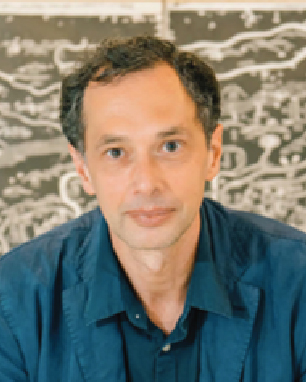
Marco Caboara is Senior Lecturer in the History of Cartography and the History of Science at the Hong Kong University of Science and Technology (HKUST). Until recently he has been the curator of the Western antique maps of China Collection in the HKUST Library.
Growing up in Genova, where a short walk would bring you from the prison where Marco Polo wrote his Milione to the house of Christopher Columbus, I have cultivated a lifelong interest in travel and especially in the relationship between Europe and China.
I studied History, Linguistics and Chinese at Scuola Normale Superiore in Pisa, Beijing University, and City University of Hong Kong and I received my Ph.D. from the University of Washington, Seattle with a study of the linguistic features of Classical Chinese Bamboo Manuscripts.
The past few years have been happily spent on the research and development of the library’s map collection and on the present carto-bibliography. Future plans include the continuation of the carto-bibliography into the nineteenth century and a companion volume dedicated to Chinese maps of China.
Representative Publications
Book
Regnum Chinae: The Printed Western Maps of China to 1735. Leiden: Brill, 2022(https://brill.com/view/title/39120?language=en)
Journal Articles and Book Chapters
2022. “1775 – Visualising a New Dominion. The first popular map of Xinjiang.” In Martijn Storms (ed.), Maps That Made History, 1000 Years of World History in 100 Old Maps, Tielt (Belgium): Lannoo, pp. 186-189.
2022. “An early Jesuit manuscript map of East Asia held at the Jesuit Archives in Rome.” In Paula van Gestel (ed.) Atlas Amicorum Peter van der Krogt. Leiden: Brill, pp. 289-302.
2021. “The Geographical Complete Map of the Everlasting Unified Qing Empire Daqing wannian yitong dili quantu 大清萬年一統地理全圖.” Orientations 52 (6): 100-106.
2020. “The first printed missionary map of China: ‘Sinarum Regni aliorumque regnorum et insularum illi adiacentium descriptio’ (1585/1588),” Journal of the international map collectors’ society (IMCoS) 162: 6-21.
2018. “Bu shu 卜書 A recently published Shanghai Museum bamboo manuscript on divination.” In Michael Lackner (ed.), Coping with the Future: Theories and Practices of Divination in East Asia. Leiden: Brill, pp. 23-46.
2017. “Attitudinal nominalizer(s) in Chinese: Evidence of recursive grammaticalization and pragmaticization,” Lingua 200: 1-21 (with Foong HaYap).
2017. “Yě 也 (Classical Particle) in excavated texts.” In Wolfgang Behr et al., Encyclopedia of Chinese Language and Linguistics, Vol. 4. Leiden: Brill, pp. 655-663.
2016. “Drought, omens and the body politic: debates between rulers and ministers in the Shanghai Museum manuscript “Jian da wang bo han” 簡大王迫 旱.” Bulletin of the Jao Tsung-I Academy of Sinology 26: 47-75.
2016. “From Discourse to Grammar, but not all the way: Grammaticalization and redundancy of the Classical Chinese function word ye 也 in pre-Qin texts, with special attention to the Guodian bamboo manuscripts.” In Festschrift for Anne Yue-Hashimoto. Hong Kong: Chinese Language Research Centre, The Chinese University of Hong Kong, pp. 447-460.
2016. “Mapping Omens: Strange Creatures and Prodigies in the Book of Mountains and rivers and the Shanghai Museum Manuscript “Jian da wang bo han” 簡大王迫 旱(King Jian dispels the Drought).” In David Bradley and Likun Pei (eds.), 《山海经》世界地理与中国远古文明 "Shanhaijing" shijie dili yu Zhongguo yuangu wenming = Shanhaijing world geography and ancient Chinese civilization, Beijing: Waiyu jiaoxueyu yanjiu chubanshe, pp. 120-134.
2014. “The Bamboo Texts of Guodian: A Study & Complete Translation. By Scott Cook –Critical Review.” Journal of Chinese Studies, 59, 253-274.